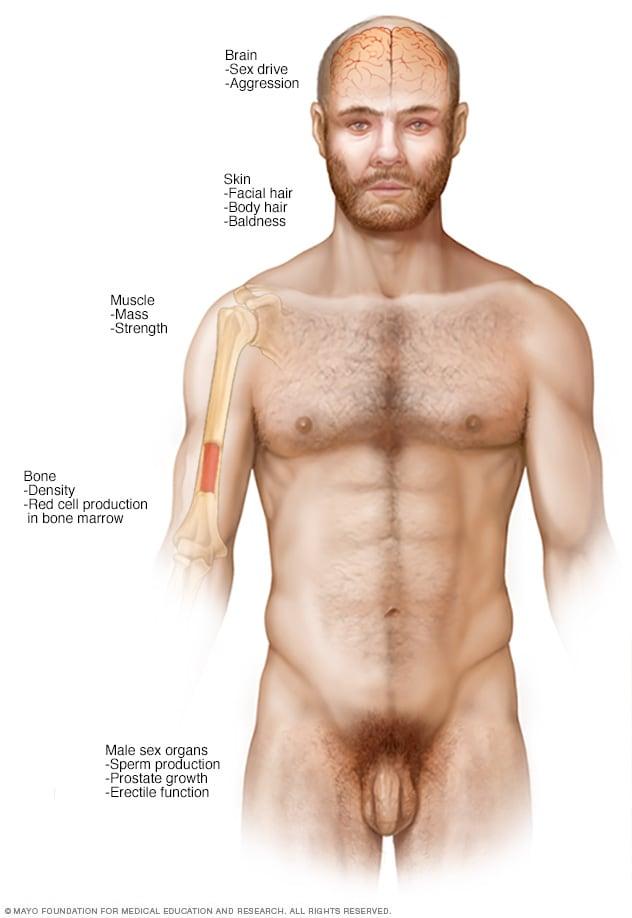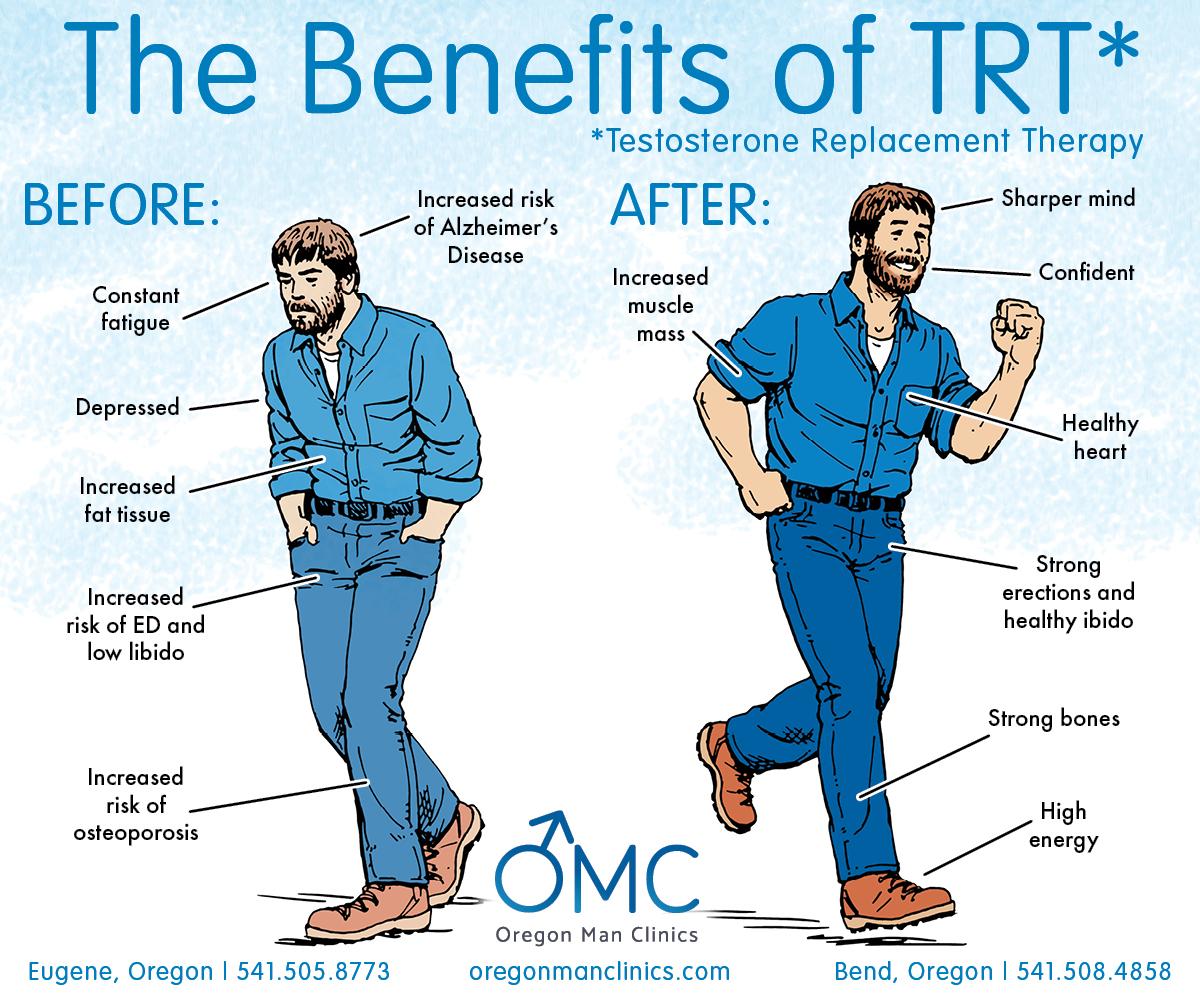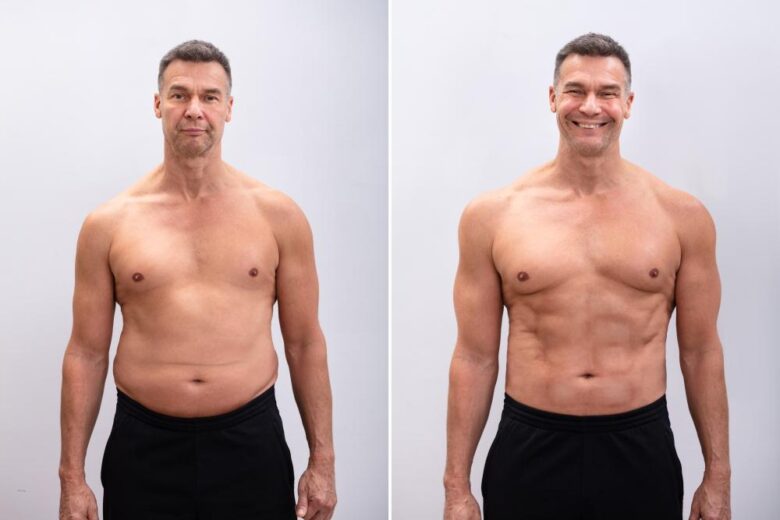In the realm of hormone health, testosterone often takes center stage as a pivotal player in male vitality and overall well-being. As conversations around men’s health evolve, two terms frequently emerge: testosterone therapy and testosterone replacement therapy (TRT). While they might seem synonymous to the untrained eye, a deeper examination reveals distinct nuances that can influence treatment pathways and personal health outcomes. This article aims to demystify these related concepts, exploring their definitions, applications, and potential implications for those navigating the often murky waters of hormone management. Join us as we delve into the science and philosophy that underpin testosterone therapy and TRT, empowering you with knowledge to make informed decisions about your health and wellness journey.
Understanding the Basics of Testosterone Therapy and TRT
Testosterone therapy encompasses a range of treatments designed to elevate testosterone levels in individuals diagnosed with low testosterone, often referred to as hypogonadism. The primary goal of this therapy is to restore hormonal balance and alleviate symptoms associated with testosterone deficiency, which may include fatigue, decreased libido, and mood changes. Various administration methods exist, including injections, patches, gels, and pellets. Each method varies in effectiveness, absorption rates, and convenience, offering patients options based on their lifestyle and preferences. Key considerations when approaching testosterone therapy include:
- Medical supervision: Regular check-ups and blood tests to monitor testosterone levels and adjust dosages.
- Potential side effects: Awareness of risks such as acne, prostate issues, or increased red blood cell count.
- Holistic approach: Addressing lifestyle factors like diet and exercise to optimize therapy outcomes.
On the other hand, testosterone replacement therapy (TRT) is a specific subset of testosterone therapy focused on providing consistent testosterone levels. Unlike some broader therapeutic approaches, TRT is often initiated when clinical symptoms accompany laboratory findings indicating low testosterone. This structured treatment aims to restore testosterone to normal physiological levels, enhancing overall well-being and energy. Factors influencing the decision to pursue TRT include:
| Factor | Consideration |
|---|---|
| Age | Hormone levels naturally decline with age. |
| Symptoms | Impact on quality of life and daily functioning. |
| Health Status | Existing medical conditions may affect eligibility. |

Exploring the Medical Benefits and Risks of Testosterone Treatment
Testosterone treatment, often referred to as Testosterone Replacement Therapy (TRT), presents an array of potential medical benefits that extend beyond the well-known implications for sexual health. Among the advantages attributed to proper testosterone therapy are:
- Improved Mood: Many patients report decreased symptoms of depression and anxiety.
- Increased Energy Levels: Enhanced vitality and reduced fatigue can lead to improved quality of life.
- Muscle Mass Growth: TRT can facilitate muscle development and reduce body fat.
- Bone Density Maintenance: Helps in preventing osteoporosis by supporting bone strength.
However, it is essential to consider the inherent risks associated with testosterone therapy. The potential side effects may include:
- Cardiovascular Issues: An increased risk of heart attacks or strokes has been noted in some studies.
- Hormonal Imbalance: Excess testosterone might lead to various hormonal disruptions.
- Prostate Health Concerns: A controversial subject, some evidence suggests potential growth of prostate tissues.
| Benefit | Risk |
|---|---|
| Improved Mood | Cardiovascular Issues |
| Increased Energy Levels | Hormonal Imbalance |
| Enhanced Muscle Mass | Prostate Health Concerns |
| Increased Bone Density | Possible Sleep Apnea Aggravation |

The Role of Testosterone in Male and Female Health
Testosterone plays a pivotal role in both male and female health, influencing various bodily functions beyond the reproductive system. In males, this hormone is crucial for the development of primary and secondary sexual characteristics, muscle mass, and bone density. Conversely, women also produce testosterone, albeit in lower quantities, which contributes to libido, bone strength, and mood regulation. The balance of testosterone is essential; too much or too little can lead to significant health issues. The body’s production is influenced by various factors, including age, lifestyle, and overall health, emphasizing the need for proper management of hormone levels.
When discussing testosterone therapy and testosterone replacement therapy (TRT), it’s essential to understand their differences and implications. Testosterone therapy can encompass a variety of treatments aimed at enhancing testosterone levels, whether through lifestyle changes, supplements, or medical interventions. TRT, however, specifically involves medical prescription of testosterone to address clinically low levels. The potential benefits of these therapies include:
- Improved mood and energy levels
- Increased libido
- Enhanced muscle mass and strength
- Better cognitive function
While these treatments can be beneficial, they also come with potential risks, such as cardiovascular issues and hormonal imbalance, necessitating a thorough evaluation and monitoring by a healthcare professional.

Evaluating the Different Forms of Testosterone Administration
When considering testosterone therapy, it’s crucial to explore the various methods of administration available, each with unique benefits and drawbacks. The most common forms include:
- Injectable Testosterone: Typically administered intramuscularly or subcutaneously, these injections may provide rapid effects, allowing for flexibility in dosage and timing.
- Transdermal Patches: These patches deliver testosterone through the skin, offering a steady release over time and maintaining stable hormone levels.
- Topical Gels: Similar to patches, gels are applied directly to the skin. They offer a convenient option but require careful application to avoid transferring the hormone to others.
- Pellets: Implanted under the skin, pellets release testosterone consistently for several months, minimizing the need for frequent dosing.
Each administration method varies in terms of absorption rates, convenience, and patient comfort. For instance, while injections may offer faster results, they could also lead to peaks and troughs in testosterone levels. On the other hand, transdermal options provide a more stable hormonal profile but can pose challenges for those with skin sensitivities. A comparison of the various methods can be summarized in the table below:
| Administration Method | Onset of Action | Frequency of Use | Pros | Cons |
|---|---|---|---|---|
| Injectable | Fast | Weekly to biweekly | Quick effect, adjustable dosage | Potential discomfort, fluctuation in levels |
| Transdermal Patch | Moderate | Daily | Steady release, convenient | Visible, possible skin irritation |
| Topical Gel | Moderate | Daily | Easy application, flexible | Transfer risk, potential skin reactions |
| Pellets | Gradual | Every 3-6 months | Low maintenance, stable levels | Surgical procedure for insertion, requires follow-up |
Important Screening and Monitoring Practices in Testosterone Therapy
When considering testosterone therapy, it is vital for patients to engage in routine screening and monitoring practices, ensuring optimal health outcomes throughout the treatment process. One of the key components is to regularly assess hormone levels and overall health status. This includes:
- Baseline Testosterone Levels: Establish initial levels to customize therapy.
- Cardiovascular Health Assessments: Monitor blood pressure, cholesterol, and cardiovascular risks.
- Red Blood Cell Count Monitoring: Regular complete blood counts (CBC) to prevent polycythemia.
- Liver Function Tests: Assess liver health, especially with injectable forms.
Moreover, clinicians often recommend periodic evaluations to monitor the long-term effects of therapy. These may include:
- Bone Density Scans: To evaluate potential osteoporosis caused by hormonal imbalances.
- Prostate Screenings: Regular checks for prostate-specific antigen (PSA) levels to mitigate cancer risk.
- Metabolic Panel: Assessing glucose, electrolytes, and overall metabolic health.
Below is a simplified table illustrating key intervals for monitoring practices:
| Screening Practice | Frequency |
|---|---|
| Testosterone Levels | Every 3-6 months |
| CBC for Red Blood Cells | Every 6-12 months |
| Liver Function Tests | Annually |
| Prostate Screening | Annually (age 50+) |
Personalizing Treatment: Factors Influencing Testosterone Therapy Decisions
When it comes to testosterone therapy (TRT), numerous factors play a crucial role in shaping treatment decisions. Personalization is key, as each individual’s needs may differ substantially. Considerations that typically influence these choices include:
- Medical History: Previous health conditions, especially endocrine disorders, can dictate the type of therapy.
- Age: Younger patients might require different approaches than older individuals experiencing age-related declines.
- Symptoms Severity: The intensity of symptoms like fatigue, mood changes, and libido loss can result in tailored therapy options.
- Goals of Treatment: Whether aiming to improve quality of life, muscle mass, or libido, treatment must align with client objectives.
Furthermore, lifestyle factors significantly impact the effectiveness and appropriateness of TRT. Patients’ daily routines, including exercise habits and diet, will influence how their body responds to therapy. Psychological factors, such as stress and mental health status, also must be addressed to enhance treatment outcomes. Below is a table summarizing key lifestyle considerations:
| Lifestyle Factor | Impact on TRT |
|---|---|
| Physical Activity | Enhances hormone balance and weight management |
| Nutrition | Supports overall health and hormone production |
| Stress Management | Reduces cortisol levels, improving testosterone efficacy |
Expert Recommendations for Safe and Effective Testosterone Management
When considering testosterone management, a multi-faceted approach is paramount for achieving safe and effective results. Consulting a qualified healthcare provider is crucial; they can evaluate individual hormonal levels and diagnose the underlying issues accurately. Moreover, individualized treatment plans that take into account personal health history and lifestyle factors can significantly enhance outcomes. Here are some key recommendations:
- Regular Monitoring: Periodic blood tests should be conducted to assess testosterone levels and adjust dosages as needed.
- Hormone Replacement Options: Explore various delivery methods, such as injections, gels, or patches, to find the most suitable option.
- Healthy Lifestyle Choices: Promote diet and exercise, as these can significantly affect testosterone levels and overall well-being.
Incorporating these strategies can help mitigate risks associated with testosterone therapy. Education on potential side effects is essential so patients can make informed decisions. Below is a simple comparison of potential benefits and risks associated with testosterone therapy:
| Benefits | Risks |
|---|---|
| Improved energy levels | Risk of cardiovascular issues |
| Enhanced libido | Possible mood swings |
| Increased muscle mass | Potential for sleep apnea |
Q&A
Q&A: Understanding Testosterone Therapy vs. TRT
Q1: What is testosterone therapy?
A1: Testosterone therapy refers to a broad spectrum of treatments designed to restore testosterone levels in individuals with low testosterone, also known as hypogonadism. This can involve various forms of administration, such as injections, patches, gels, or pellets. The goal is to bring testosterone levels back to a normal range, alleviating symptoms and improving overall quality of life.
Q2: What does TRT stand for, and how does it relate to testosterone therapy?
A2: TRT stands for Testosterone Replacement Therapy. It is a specific type of testosterone therapy aimed at replacing low testosterone levels in patients diagnosed with hypogonadism. Essentially, TRT is a subset of testosterone therapy, focusing explicitly on restoring testosterone to optimize health outcomes.
Q3: Who typically requires testosterone therapy or TRT?
A3: Testosterone therapy, including TRT, is generally recommended for men (and occasionally women) who exhibit symptoms of low testosterone. These symptoms may include fatigue, decreased libido, muscle weakness, and mood changes. A thorough medical evaluation is essential to determine if testosterone therapy is appropriate.
Q4: What are the main forms of testosterone therapy available?
A4: Testosterone therapy comes in several forms:
- Injections: Administered every few weeks, providing a dose of testosterone directly into the bloodstream.
- Transdermal Patches: These are applied to the skin and deliver testosterone continuously.
- Gels: Applied to the skin daily, allowing testosterone to be absorbed gradually.
- Pellets: Small implants inserted under the skin that release testosterone over several months.
Each method has its pros and cons, which can influence a patient’s choice and adherence.
Q5: Are there risks associated with testosterone therapy and TRT?
A5: Yes, like any medical treatment, there are potential risks and side effects. Common concerns include increased red blood cell counts, potential prostate issues, mood fluctuations, and sleep apnea. It’s crucial to have a thorough discussion with a healthcare provider to understand these risks and monitor health throughout treatment.
Q6: How do the goals of testosterone therapy and TRT differ?
A6: The primary goal of both testosterone therapy and TRT is to alleviate the symptoms of low testosterone. However, TRT specifically aims to replace low hormone levels in patients diagnosed with hypogonadism. In contrast, testosterone therapy may be utilized more broadly for other conditions, such as certain disorders of aging or specific endocrine system diseases.
Q7: Can anyone use testosterone therapy or TRT?
A7: Not everyone is a candidate for testosterone therapy or TRT. Medical professionals assess individual health conditions, hormone levels, and specific symptoms before recommending treatment. It’s vital to avoid self-prescribing, as inappropriate use can lead to significant health issues.
Q8: How can someone determine if testosterone therapy or TRT is right for them?
A8: The journey starts with a comprehensive evaluation by a healthcare professional, who will conduct blood tests to measure hormone levels and review symptoms. A balanced approach to understanding personal health history and lifestyle is essential for making this decision.
Q9: What lifestyle factors can influence testosterone levels?
A9: Lifestyle factors such as diet, exercise, sleep quality, and stress management can significantly impact testosterone levels. Regular physical activity, a balanced diet rich in nutrients, adequate sleep, and effective stress reduction techniques can all help optimize hormone levels, sometimes reducing the need for therapy.
Q10: What’s the take-home message regarding testosterone therapy and TRT?
A10: The key takeaway is that while testosterone therapy and TRT aim to address low testosterone levels, they serve specific purposes based on individual health needs. A collaborative approach with a healthcare provider is essential to determine the best course of action and to ensure safe and effective treatment. Knowledge is power, especially when it comes to understanding one’s health and making informed choices.
Future Outlook
As we reach the end of our exploration into the compelling world of testosterone therapy and TRT, it’s clear that both paths offer unique insights into the balance of hormones and health. While traditional testosterone therapy often emphasizes the broader landscape of testosterone management, TRT sharpens the focus on targeted treatment strategies aimed at restoring hormonal equilibrium for those in need.
Ultimately, the choice between these approaches hinges on individual circumstances and the guidance of healthcare professionals, who can illuminate the complexities of hormonal health. As science continues to evolve, so too does our understanding of testosterone’s role in wellness, making it essential for individuals to stay informed and engaged in their health journey.
In navigating this nuanced terrain, remember that knowledge is empowerment. Whether considering testosterone therapy or TRT, it is vital to consult with experts, conduct thorough research, and prioritize what aligns best with your health goals. The conversation around testosterone is not just about therapy—it’s about discovering what it means to feel vibrant and balanced in an ever-changing world.










